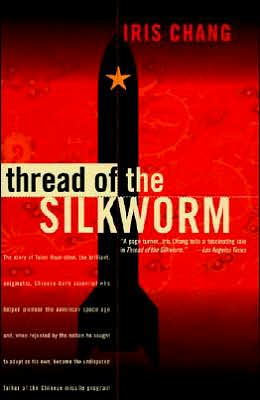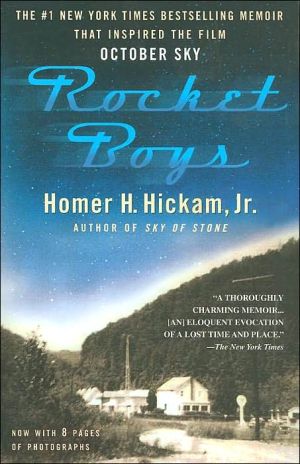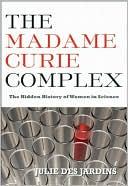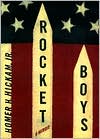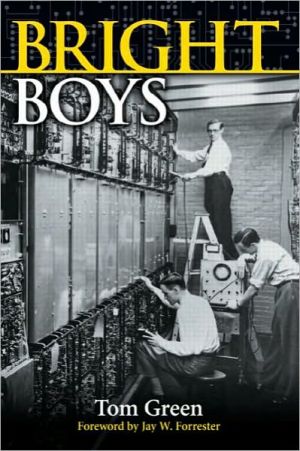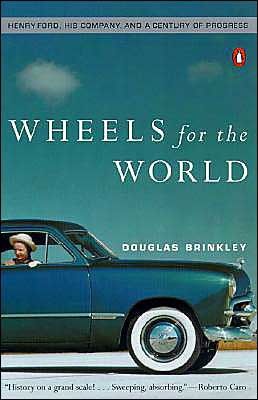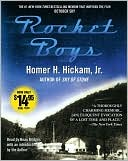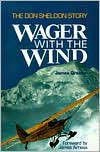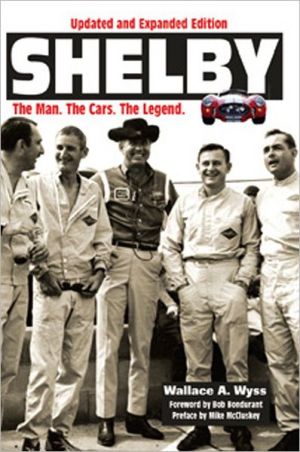Thread of the Silkworm
The definitive biography of Tsien Hsue-Shen, the pioneer of the American space age who was mysteriously accused of being a communist, deported, and became—to America’s continuing chagrin—the father of the Chinese missile program.
Search in google:
"The definitive biography of Tsien Hsue-Shen, the pioneer of the American space age who was mysteriously accused of being a communist, deported, and became—to America’s continuing chagrin—the father of" Library Journal Few Americans remember Tsien Hsue-shen, the subject of this book. Born in China in 1911, he came to the United States during the 1930s, earned a Ph.D. at Caltech, and made major contributions to aeronautics, rocketry, and other fields. After applying for U.S. citizenship in the 1950s, however, he became an innocent target of the Red Scare and was deported. Then, instead of assuming the leadership role in America's missile and space programs for which he appeared destined, he helped create the Chinese missile and space program that later supplied the Third World with Silkworm missiles. Tsien's incredible life is the story of one of the greatest blunders ever made by the U.S. government. Chang's biography ranges across the histories of rocketry, aeronautics, nuclear weapons development, and U.S.- China relations. With Anna Fields's energetic reading, this fascinating book would make a can't-miss addition to any general audiobook collection.--Kent Rasmussen, Thousand Oaks, CA Copyright 1999 Cahners Business Information.
Chapter One \ \ \ Hangzhou (1911-1914)\ His earliest memories, now nearly a century old, may well be of himself as a young boy, no more than three years old and surely not alone, standing at the edge of a lake and looking out over an unobstructed view of hills, pagodas, and temples.\ The lake is West Lake. The city is Hangzhou, a beautiful, ancient city "Above, there's heaven, but below there's . . . Hangzhou" was a popular saying of the time. It has been home to Tsien Hsue-shen's ancestors for more than a thousand years. For the first three years of his life, it will be his home, too.\ Three years old is very young to remember anything very much, so it may well be that all Tsien really remembers of the view from the lake is what elders told him of it during the years of his growing up. How could they not want to impart their memories of such a place and time to their young charge? Back then, fishermen drifted across West Lake in wooden skiffs, and lotuses spread themselves in wide green tangles. A famous legend described the spot as a pearl dropped from heaven by a phoenix and a dragon. Each then flew down to its banks and was transformed into one of the two mountains surrounding the city.\ In the tenth century, the Wuyue emperor Qian Liu, from whom Tsien was directly descended, deepened and dredged the lake. By the time Marco Polo arrived in 1276, a palace had been built on an island in the center of the lake; ornately carved boats carried courtesans and musicians arriving to entertain the royalty who now lived at the island palace. Polo himself, the world traveler of his time, declared Hangzhou "thegreatest city in the world, where so many pleasures may be found that one fancies himself to be in paradise."\ On the east side of the lake stood an ancestral temple. A recent visit to the temple revealed a structure with timber walls painted red and white, its roof covered with gray tile, its entrance guarded by dragon motifs. Also built by Emperor Qian Liu, the temple had survived centuries of war and natural calamities.\ From the Phoenix mountain on the north side of the lake, Bao Su Tower rose sharp and small. Standing alongside the family temple, looking across the lake, Tsien would have seen what appeared to be a tiny knife blade of darkness. But if he chose to climb the Phoenix mountain—following a path of stone hemmed in by trees—the blade grew into a massive tower of brick: a gray, ominous structure straining toward the heavens. The sides were patterned with intricate dark squares that resembled windows, and the wide octagonal base of the tower tapered to a small point in the sky\ The original nine-level structure, then named the Heavenly Pagoda, was erected around A.D. 970 by another of Tsien's ancestors, Wu Yanshuang, uncle of the Wuyue emperor Qian Chu. Over the centuries it had been repeatedly destroyed and rebuilt, shrinking the tower to seven levels by the time Tsien was a child. Still, it retained the silhouette of its old grandeur.\ Although Tsien was to spend a fraction of his childhood in Hangzhou during the 1910s, the city—or rather, his family's ancient heritage there—was to shape and define his life for years to come. These family legends, as old as they were, instilled in him a sense of pride and reminded him as he grew older—however depressed or tired he might have felt in the moment—that the history of one of China's greatest cities was entwined with the story of his ancestors. If nothing else, it was a reminder that the blood of kings flowed through his veins.\ As a family, the Tsiens were scholarly and ambitious, steeped in both Chinese culture and Western ideology. Wealthy and aristocratic, they were nonetheless staunch believers in the principles of education and hard work. They expected their only son, Tsien Hsue-shen, to become a scholar and make a lasting contribution to society.\ The father, Tsien Chia-chih (spelled Qian Jiazhi today), was a quiet man, gentle and patient by nature. In his youth, he was tall and slender, a handsome, clean-shaven man moving about in blue cotton robes. Relatives now retain only vague wisps of memory about him, all concentrated in the years when he lived in the British settlement in Shanghai, as a benevolent, elderly gentleman who was a devout Buddhist and who during holidays permitted his great-nieces and -nephews to climb up his knees and play with his long white beard.\ Born in Hangzhou in 1882 to a family of prosperous silk merchants, he grew up in an era when the tenets of Western philosophy and methodology were rippling into the Chinese consciousness. As a teenager he studied at Qiushi shuyuan—then a middle school in Hangzhou and later the predecessor of Zhejiang University Qiushi shuyuan was a cluster of small buildings in the eastern district of the city, only one of which survives today: a whitewashed structure with brown flying rafters and delicately carved wood dragons under the eaves.\ One part of the curriculum was traditional, devoted to classical Chinese literature. (One well-remembered professor could recite, entirely by memory, long passages of Cao Xueqin's classic Dream of the Red Chamber.) Following China's defeat in the Sino-Japanese War in 1895, activists had demanded additions to the traditional curriculum that would make the country more competitive with foreign powers. Courses in English, biology, and physics were offered, though students could not conduct experiments; they merely watched as the instructors did experiments for them.\ In 1902, Chia-chih joined a group of Chinese students traveling to Japan, a country famous at that time for its universities, military academies, and medical schools. Its physical proximity to China—along with cultural similarities—made it a practical alternative to going to Europe or America. In Japan, Chia-chih attended two universities, where he majored in education and philosophy When Tsien Chia-chih returned to Hangzhou, he became one of the principals at the Liangzhi Normal School, a teacher's training school. His colleagues consisted primarily of other young men who were in the vanguard of educational reform in China and who, like Chia-chih, had studied in Japan. (One of them was Zhou Shuren, who was to become China's most famous short story writer under the pseudonym Lu Xun.) Tsien Chia-chih taught philosophy and ethics and acted as administrative representative of the school.\ There, in his native city of Hangzhou, Chia-chih married Chang Langdran, a woman from a family of silk merchants whose members had obtained powerful political posts in Shanghai and Beijing. On December 11, 1911, his wife gave birth to his first and only child. The very name of the child—Hsue-shen, which means "study to be wise"—reflected the hopes the father had pinned on him.\ East of the family temple and parallel to a small stream lay the quiet, genteel road of Fangguyuan. All along the street gates separated the public road from the homes and private grounds of those who lived behind the gates. Behind one such set of gates, beyond three large courtyards, past trees and flowers planted in vases of stone, was a cluster of two-story buildings. Walking toward them, one would arrive at the intricately latticed door of Tsien's childhood home.\ Inside, the floors were painted a dark red, and the furniture was made of a scented and expensive carved wood. Delicate scrolls of calligraphy and waterfalls hung on the walls, which, like most other homes in Hangzhou, had no glass windows, only square openings that freed the interior to the outside air. In one room, Tsien's parents slept in a bed that was, in the words of one relative, "like a small house." Over the bed arched a blue silk canopy, and along its frame hung silk curtains delicately embroidered with red lotus flowers. Attached to the bed was a rosewood bureau drawer. Tsien had a mom of his own.\ A day in the Tsien household began, as it did for most other families in Hangzhou, at the crack of dawn. Hu Guoshu, a distinguished Hangzhou historian, described how Tsien and his family might have spent a day in the city in the 1910s.\ Upon awakening, Tsien's father most likely put on a changpao, a long, flowing robe of cotton or silk that was fastened from the neck down with cylindrical cloth buttons. It brushed the tips of his cotton, hand-stitched shoes.\ All through the town, servants and wives boiled water on earthenware stoves heated with wood, and then poured the water, steaming, into kettles of tea and pots of rice porridge. Breakfast usually consisted of a sweetfagao pastry, onion pancakes, or maybe some baozi, steamed bread rolls stuffed with meat. From the ceilings of most homes hung bamboo baskets heavy with food; the cracks in the baskets permitted cooling evening winds to act as a natural refrigerant. In Tsien's home, the food was stored in a special cabinet with sides of wire mesh.\ Then, perhaps armed with an oilpaper parasol and metal container packed with lunch, Tsien's father would be off to work, either by foot or by rickshaw. A full day of teaching and administrative duties awaited him, and he was unlikely to return until four or five in the afternoon. His son, Hsue-shen, meanwhile, would remain at home with his mother.\ The feet of Chang Langdran had been bound when she was a child, which broke her foot bones and forced her toes to grow into the balls of her feet. Crippled for life, she was unable to perform any physical labor. But that was the point. Only the wealthiest of men could afford to marry women like Chang Langdran because servants would be required to take care of all the household work. According to the waning memories of Tsien's relatives who knew him in his youth, the Tsien family had three servants: a cook, a maid, and a chauffeur.\ Chang Langdran is remembered as an attractive, vivacious woman milling about in a pleated red silk dress. She had a classical Chinese education, rare for women in her generation. In Hangzhou, her family had employed a private tutor to teach her art, calligraphy, history, and literature. As a young woman, she read the Five Classics—the Book of Rites, the Book of History, the Spring and Autumn Annals, the Book of Poetry, and the Book of Changes—that formed the canon of Confucian philosophy Her admirers remember her as a woman who was quick of wit and smooth of tongue, eloquent in speech and manner. Underneath her poise was a woman bursting with energy. Unburdened by physical labor, she had time to fashion for her only son a cocoon of culture, learning, and gentility\ Beyond the gates of Tsien's childhood home was the rest of Hangzhou, a prosperous city in the 1910s. Geographically, Hangzhou rests some one hundred miles southwest of Shanghai in the Zhejiang province. In the 1910s and 1920s its population was around two hundred thousand. Few other areas in China were blessed with its art, its industry, and its pastoral setting.\ Hangzhou was a market city From its factories came woven silk, cotton, and Longjing tea. In the streets vendors sold silk parasols, sandalwood fans, brocade gowns, and bambooware. The farmers grew rice, millet, sweet potatoes, plums, and watermelon, and around the city were vast groves of mulberry trees and tea plantations. Dinners in Hangzhou were laden with such goods as lumps of meat stewed in soy sauce and ginger, steamed crab, shellfish, and sweet-and-sour carp.\ The affluence of both Tsien's family and the city of Hangzhou gave him a sense of security during his formative years. Yet he was living in one of the most unstable times in China's history.\ Historically, China has struggled as much as any nation could to keep out foreign influences. As late as 1834 all but one of her ports were closed to foreign trade. But the British in particular were just too eager to gain access to Chinese markets and had too powerful a military force for the Chinese to resist. After the Opium War of 1839-42, Britain, along with France, Russia, and the United States, began to acquire trading and other rights at a number of Chinese ports. In 1895, with the end of the Sino-Japanese War, the Chinese were forced to sign a humiliating treaty with Japan, which opened Hangzhou, along with three other treaty ports, to foreign trade.\ The influx of foreign ideas and technology, while unsettling in the way that all change is unsettling, accelerated the pace of life in Hangzhou. The Tongyi Gong Cotton Mill opened in 1897 and the Zhenjiang Xingye Bank ten years later. Construction began in 1905 on a railway that would connect Hangzhou with Shanghai. The sale of newspapers mushroomed almost overnight, with residents subscribing to the local Hangzhou Baihua Bao and Zhejing Chao, as well as the regular Shanghai dailies. Hangzhou was in the throes of an industrial revolution.\ Then came another revolution. in 1911, after more than two centuries of rule, the Qing (Manchu) dynasty crumbled. Fear and hostility toward the European interventionalists no doubt contributed to anti-Manchu feeling in China; more radical Chinese believed that the nation could be strengthened by overthrowing the Qing and establishing a constitutional government. The very month of Tsien's birth, mutinous troops defeated imperial forces in Nanjing and proclaimed a new government. Sun Yat-sen, leader of the nationalists, returned from exile on Christmas Day to become the first provisional president of the Republic of China.\ Although Tsien would have been too young to remember, celebrations broke out across China. In Shanghai, residents tore down the city walls, seen as a relic of medievalism. The pigtailed queue, long considered a symbol of submission to the Manchus, was banned, and barbers were stationed by city gates to seize queues in the street and shear them off. In Hangzhou, local Manchu officials were arrested, while townspeople hoisted paper lanterns and brightly colored sashes and flags onto pavilions across the city to celebrate the first Republican New Year.\ It was Sun Yat-sen's dream to have a democratic China with free elections, a senate, and a house of representatives. That dream was shattered when Song Jiaoren, leader of the majority party of the Guomintang (the GMT), was assassinated in 1913—a murder linked to Yuan Shikai, Sun's successor. Then Yuan outlawed the GMT completely and in 1914 dissolved Parliament. Sun was exiled once again, this time to Japan, while Yuan began to take on the trappings of emperor.\ Despite his abuse of political power, Yuan pushed for educational reform in China. He wanted compulsory and free primary education for males and started experimental programs in teacher retraining. These reforms coincided not only with the beginning of Tsien's education but with Tsien's father's appointment in the Ministry of Education. It appears that in 1914 Tsien Chia-chih resigned from his post at Hangzhou, packed his belongings, and moved his family to Beijing. The thousand-year connection between the Tsien family and the city of Hangzhou had abruptly come to an end.
AcknowledgmentsviiIntroductionxi1 Hangzhou (1911-1914)12 Beijing (1914-1929)83 Shanghai (1929-1934)224 Boxer Rebellion Scholar (1934-1935)355 MIT (1935-1936)406 Theodore von Karman477 Caltech (1936)618 The Suicide Squad (1937-1943)689 The Jet Propulsion Laboratory (1943-1945)9310 Washington and Germany (1945)11011 Return to MIT (1946-1947)12112 Summons from China (1947)13213 Jiang Ying13614 Ascent (1947-1948)14015 Caltech (1949)14416 Suspicion (1950)14917 Arrest (1950)15818 Investigation (1950)16319 Hearings (1950-1951)16720 Waiting (1951-1954)17221The Wang-Johnson Talks (1955)18422 "One of the Tragedies of This Century"19123 A Hero's Welcome (1955)19924 Missiles of the East Wind20825 Becoming a Communist231Epilogue261Notes265Index319
\ Library JournalFew Americans remember Tsien Hsue-shen, the subject of this book. Born in China in 1911, he came to the United States during the 1930s, earned a Ph.D. at Caltech, and made major contributions to aeronautics, rocketry, and other fields. After applying for U.S. citizenship in the 1950s, however, he became an innocent target of the Red Scare and was deported. Then, instead of assuming the leadership role in America's missile and space programs for which he appeared destined, he helped create the Chinese missile and space program that later supplied the Third World with Silkworm missiles. Tsien's incredible life is the story of one of the greatest blunders ever made by the U.S. government. Chang's biography ranges across the histories of rocketry, aeronautics, nuclear weapons development, and U.S.- China relations. With Anna Fields's energetic reading, this fascinating book would make a can't-miss addition to any general audiobook collection.--Kent Rasmussen, Thousand Oaks, CA Copyright 1999 Cahners Business Information.\ \ \ \ \ BooknewsChang traces the life of the visionary scientist Tsien Hsue- shen, born in China in 1911 and educated at the best US universities, who pioneered the US space program until accused of communism and deported to China. There he revolutionized the missile program that eventually produced the Silkworm, the Chinese missile now sold to countries in conflict with the US, and which menaced US forces during the war against Iraq. Annotation c. Book News, Inc., Portland, OR (booknews.com)\ \
